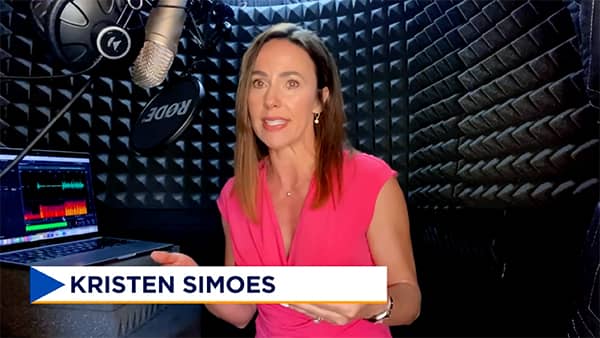Machine Living
Voice AI: ‘Maybe there is room for all of us at the table’
In this series of articles, video productions, and podcasts, we tap into a community of creators to try to make sense of how we make our way in the age of AI. One theme is constant and timeless: adapt, or risk fading away, in a world where machines increasingly influence our way of living.
By Will Frampton
Owner and Director at McLeod Media
• Episode 1: Kristen Simoes, voice actor and broadcaster
The first in our series of conversations around Artificial Intelligence, speaking with fellow creators and producers, features Kristen Simoes. A veteran of the broadcast world with Emmy awards to her credit, Simoes has also carved a niche in the voice-over and voice-actor world.
The inspiration for this series has been building over time as we move further into the era of AI. But the big push that made me get moving on production was an ad I saw on a social media feed and the people it made me think of.
It was an ad for AI-powered voice-over software. The product boasted abilities to take any script and deliver it with professional voice-over quality. The user can choose from any number of voice-over styles based on a variety of criteria.

The samples made it sound like a real voice-over professional was delivering the lines, and I found it terrifying. Here it was, a machine, generating assets that were, until this era, uniquely human. A creative industry – that of voice acting – powered by professionals with decades of experience and passion for their craft is now being encroached on by machines.
I thought of my friends in the industry and, in this case, Kristen Simoes, who I know has invested so much of her time and passion into the craft. And I have other friends in this industry with similar lifetime investments.
What do they think about this? How are they planning for a future where they have to compete against software that doesn’t get tired, won’t have scratchy voices during allergy season, and can work for a fraction of the cost?
“For voice actors, initially, there was a whole lot of fear that artificial voices are going to replace human voices,” said Simoes.
The best way to sort through these feelings is to engage in conversations among peers.
I knew the news couldn’t be all bad. As Kristen quickly points out in our conversation, some positives can be observed as AI gets better at producing human narration.
“On our local newspaper’s website, you can read the stories of the day, or you can hit the play button and listen to them (with an AI-generated voice). This is really valuable for people with visual impairment,” Simoes said.
Simoes continued: “We all know the state of newspapers; they wouldn’t be able to pay a voice actor to create all of the content. So, this is a great benefit for visually impaired people.”
“We’re starting to see, maybe there is room for all of us at the table.”
She added that reading newspaper articles is a job that likely would never have gone to a voice actor but is now attainable thanks to AI-generated voices.
Many thanks to Kristen for participating in this series and bringing a thoughtful perspective to this advancement in AI technology.
Machine Living:
- Overview | Kristen Simoes | Mike Petchenik | Joe Gransden
